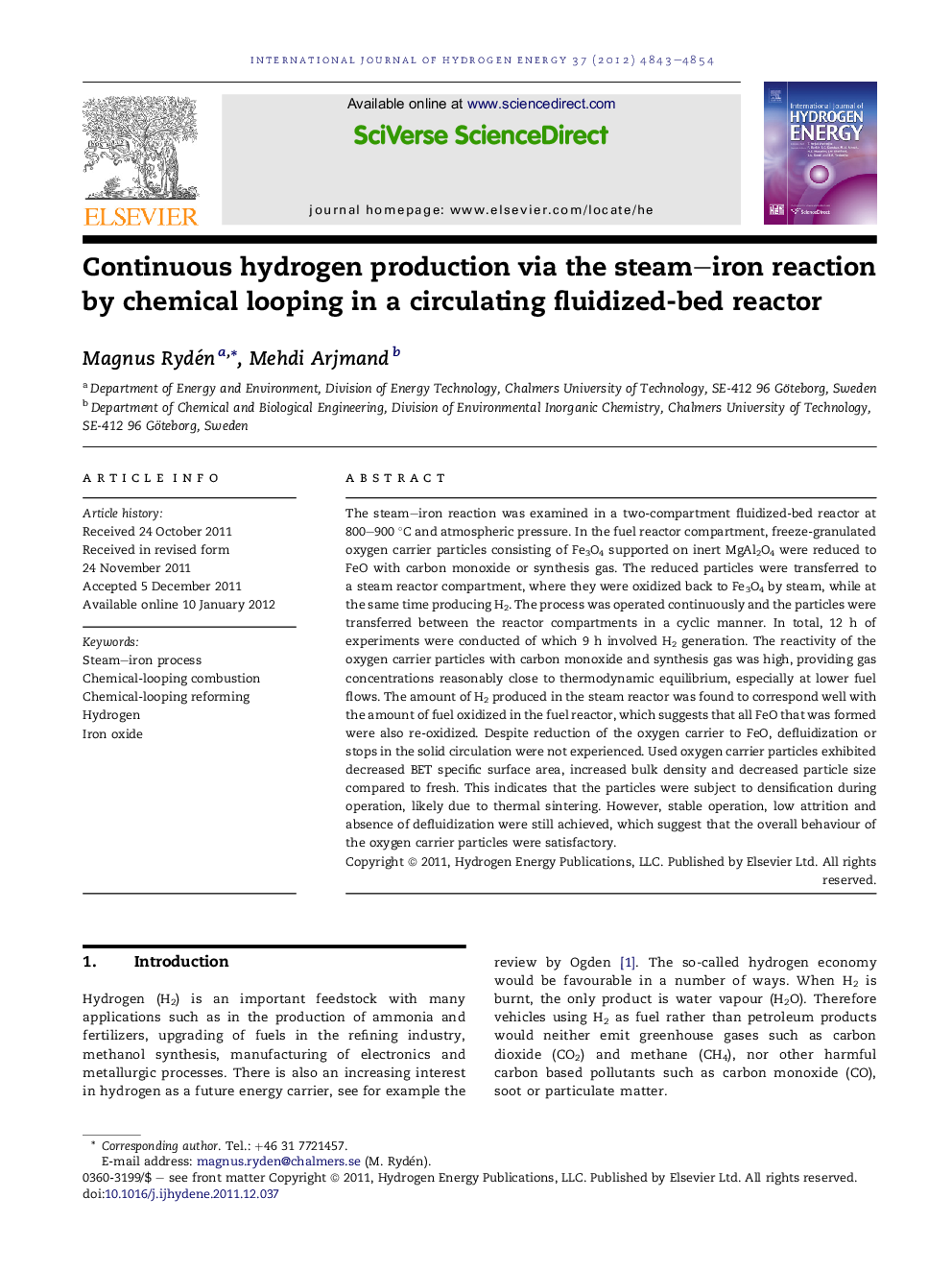| کد مقاله | کد نشریه | سال انتشار | مقاله انگلیسی | نسخه تمام متن |
|---|---|---|---|---|
| 1271501 | 1497563 | 2012 | 12 صفحه PDF | دانلود رایگان |

The steam–iron reaction was examined in a two-compartment fluidized-bed reactor at 800–900 °C and atmospheric pressure. In the fuel reactor compartment, freeze-granulated oxygen carrier particles consisting of Fe3O4 supported on inert MgAl2O4 were reduced to FeO with carbon monoxide or synthesis gas. The reduced particles were transferred to a steam reactor compartment, where they were oxidized back to Fe3O4 by steam, while at the same time producing H2. The process was operated continuously and the particles were transferred between the reactor compartments in a cyclic manner. In total, 12 h of experiments were conducted of which 9 h involved H2 generation. The reactivity of the oxygen carrier particles with carbon monoxide and synthesis gas was high, providing gas concentrations reasonably close to thermodynamic equilibrium, especially at lower fuel flows. The amount of H2 produced in the steam reactor was found to correspond well with the amount of fuel oxidized in the fuel reactor, which suggests that all FeO that was formed were also re-oxidized. Despite reduction of the oxygen carrier to FeO, defluidization or stops in the solid circulation were not experienced. Used oxygen carrier particles exhibited decreased BET specific surface area, increased bulk density and decreased particle size compared to fresh. This indicates that the particles were subject to densification during operation, likely due to thermal sintering. However, stable operation, low attrition and absence of defluidization were still achieved, which suggest that the overall behaviour of the oxygen carrier particles were satisfactory.
► H2 generation via steam–iron reaction (SIR) in a circulating fluidized-bed reactor.
► Experiments conducted in similar fashion as chemical-looping combustion (CLC).
► Reduction of synthetic iron oxide particles with different fuels down to FeO.
► Subsequent oxidation with H2O forming H2 and Fe3O4.
► A combined SIR and CLC process could produce H2 with inherent CO2 capture.
Journal: International Journal of Hydrogen Energy - Volume 37, Issue 6, March 2012, Pages 4843–4854